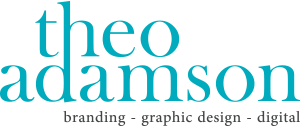Fledgling graphic designers might be ready to take on the world with their creativity and skill but they will also need to be clear, concise and specific in their design contracts to ensure that once they are hired, all parties will be informed and satisfied with the terms and conditions. Clients on the other hand, should familiarise themselves with a designers process and should have an idea of what to expect when commissioning graphic design work.
Here are 8 main things clients and designers should expect in their design contracts:
List out the various stages of the project, the deliverables, the time required and the cost for each stage. If the brief changes half-way through the project everyone can be clear that if additional work is required. It will be costed accordingly. Listing out the stages helps the client to understand the process and what they should expect at each stage, as well as allows designers to work with the client to put a timeline in place of how the designer will work towards the end goal.Transparency is key to a successful project and a good working relationship with the client. If you are not transparent from the start, then this may lead to issues later down the line. Listing the terms and conditions clearly in the contract allows the client to be clear on what basis the project will be undertaken by the designer. These T&C’s can be discussed and amended, depending on the client and the project.
Make sure to have enough information to allow you to put together a detailed quote. The quote forms the basis for the contract between the designer and the client. If the client agrees to the quote then they are agreeing to the terms and conditions within the quote. Once the contract is drafted, the client may ask to clarify or amend some parts of it which can be reworked for the mutually-agreed final contract.
Specify how long a quote and a contract are valid for. Costs and circumstances may change so it is important to clarify the validity and time-frame of each document. This projects the designer in case a project is cancelled or is stalled for a significant amount of time then the designer can charge for the work carried out to date.
Make the payment terms clear. For bigger jobs you can usually include an advance payment over a certain budget and a final payment on completion. This arrangement helps with cash flow and to cover any expenses you might need to incur for the project. It is an added incentive to get the job completed within the agreed time-frame. Make sure to inform the client that all working files will only be supplied to them upon full payment of the completed project. This gives the designer some protection should there be any issue with payments.
Specify amount of amends included. I usually include two rounds of amends within in the price of a project and let the client know that additional amends can be costed separately. The reality is that designers often end up doing more than two rounds of amends, and it is good to make it clear and have a limit. I’m sure we all have had that client who has never-ending final tweaks and changes, which need to be brought to a stop or recharged for. Otherwise a job soon goes from being profitable to costly and time-consuming as it is taking you away from more paid work.
Make it clear what languages you are working in, for example English, and that translations are not included unless clearly stated in the quote and the contract. If a client wants a logo in more than one language other than English, then this must be outlined in the cost as the designer may require the services of translation or foreign language art worker to adapt the English logo to the other requested language.
Make sure to clarify from the start if any stock images, llustrations /photography/ retouching, print and production are included or not in the quote/ contract. We don’t want clients to think that the quote includes printing of materials, like business cards for example, and be disappointed or upset once they find out they aren’t.
